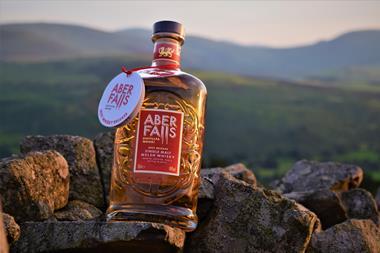The latest case of ISA in Scotland's salmon farms comes as no surprise, says Joanna Blythman
The recent outbreak of infectious salmon anaemia (ISA) in Shetland will do nothing to enhance the already tarnished image of Scottish farmed salmon. This controversial product of intensive aquaculture is already disappearing from menus in restaurants that base their credentials on ingredient quality and provenance - a telling vote of no confidence.
Unlike the wild 'king of fish', basic grade farmed Scottish salmon is about as appealing to thinking chefs these days as broiler chicken. Some have latched on to Freedom Food and organic equivalents, but these are only slightly less intensive versions of the same unsustainable farming system and cannot expect to escape the dreary procession of environmental and animal welfare scandals that plague it.
ISA is what animal welfarists call "a disease of intensification", yet another of the miscellaneous contagions thrown up by our pursuit of cheap protein. It is a global problem for farmed salmon from Chile and the Faroes to Norway and Canada, and an intractable one too. ISA last hit Scotland in 1999 when it cost the industry £37m. It is the kind of disease you court when you cram a species that swims hundreds of miles in the wild into cages in water polluted with uneaten feed, faeces and the discharge of untreated blood and waste.
As I write, 27 salmon farms are in the official control zone and a further 14 are under surveillance. Nevertheless, salmon from both these zones can still make their way into the human food chain. The Scottish Government admits "fish at near-harvestable size may be authorised for moving to harvest stations and may be harvested". Bear in mind it takes six weeks for tests to show conclusively the presence of the virus so there has to be a possibility that salmon with sub-clinical ISA could end up on our plates. So much for piscine application of the precautionary principle.
The official rationale here is that ISA poses "no risk to human health" and it is correct that there is no evidence to the contrary (yet). But if this was foot and mouth, would our regulators and supermarkets be so laid back? And if consumers knew that their farmed salmon, however safe to eat, was coming from waters contaminated with a virulent pathogen associated with intensive farming, poor animal husbandry and environmental degradation, might they not lose the taste for it ?
Joanna Blythman is a food journalist and author of Bad Food Britain.
The recent outbreak of infectious salmon anaemia (ISA) in Shetland will do nothing to enhance the already tarnished image of Scottish farmed salmon. This controversial product of intensive aquaculture is already disappearing from menus in restaurants that base their credentials on ingredient quality and provenance - a telling vote of no confidence.
Unlike the wild 'king of fish', basic grade farmed Scottish salmon is about as appealing to thinking chefs these days as broiler chicken. Some have latched on to Freedom Food and organic equivalents, but these are only slightly less intensive versions of the same unsustainable farming system and cannot expect to escape the dreary procession of environmental and animal welfare scandals that plague it.
ISA is what animal welfarists call "a disease of intensification", yet another of the miscellaneous contagions thrown up by our pursuit of cheap protein. It is a global problem for farmed salmon from Chile and the Faroes to Norway and Canada, and an intractable one too. ISA last hit Scotland in 1999 when it cost the industry £37m. It is the kind of disease you court when you cram a species that swims hundreds of miles in the wild into cages in water polluted with uneaten feed, faeces and the discharge of untreated blood and waste.
As I write, 27 salmon farms are in the official control zone and a further 14 are under surveillance. Nevertheless, salmon from both these zones can still make their way into the human food chain. The Scottish Government admits "fish at near-harvestable size may be authorised for moving to harvest stations and may be harvested". Bear in mind it takes six weeks for tests to show conclusively the presence of the virus so there has to be a possibility that salmon with sub-clinical ISA could end up on our plates. So much for piscine application of the precautionary principle.
The official rationale here is that ISA poses "no risk to human health" and it is correct that there is no evidence to the contrary (yet). But if this was foot and mouth, would our regulators and supermarkets be so laid back? And if consumers knew that their farmed salmon, however safe to eat, was coming from waters contaminated with a virulent pathogen associated with intensive farming, poor animal husbandry and environmental degradation, might they not lose the taste for it ?
Joanna Blythman is a food journalist and author of Bad Food Britain.















1 Readers' comment